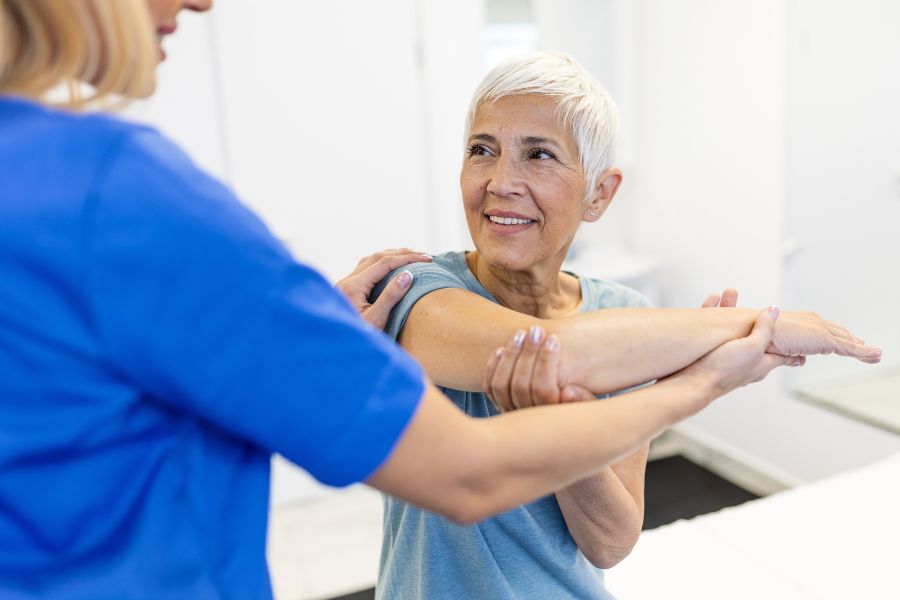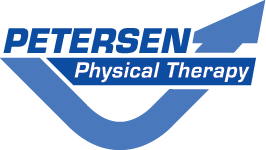Manual therapy is a staple modality for physical therapists—one that we offer as part of almost all of our in-clinic treatment plans. However, since massage (soft tissue mobilization) can be a piece of manual therapy, we sometimes have patients who wonder whether in-clinic manual therapy offers benefits versus simply seeking traditional massage therapy.
Manual therapy and massage therapy both use hands-on techniques, but their goals and applications differ. Manual therapy is a clinical approach performed by physical therapists to restore joint mobility and correct movement dysfunctions, while massage therapy focuses on muscle relaxation, stress reduction, and general wellness.
In short, manual therapy addresses the cause of pain, whereas massage therapy helps manage its symptoms. In this article, we’ll discuss how these two hands-on approaches differ, where they overlap, and how to choose the right one for your needs.
First, let’s define manual therapy
Manual therapy is a specialized form of physical therapy performed by licensed physical therapists. It focuses on assessing and correcting specific movement dysfunctions that limit how your body functions. The goal is to restore joint mobility, improve soft tissue health, and relieve pain by addressing the root cause rather than just the symptoms.
Common manual therapy techniques include:
- Joint mobilization or manipulation to improve passive range of motion
- Soft tissue mobilization and myofascial release
- Muscle energy techniques
- Trigger point therapy
- Manual traction
Manual therapy is more than just a set of techniques—it’s a clinical approach and it requires specialized training. The physical therapist evaluates the whole body to determine how one region’s stiffness or weakness might be affecting another. That’s what makes manual therapy distinct from general massage.
For a deeper dive into this topic, see of full article on how manual therapy works.
Massage therapy vs manual therapy: key differences
Both approaches are hands-on and therapeutic, but they differ in training, purpose, and long-term outcomes.
| AspectManual therapyMassage therapy | ||
|---|---|---|
| Provider | Performed by a licensed physical therapist | Performed by a licensed massage therapist |
| Primary goal | Restore movement, relieve pain, and improve function | Promote relaxation, reduce tension, and enhance circulation |
| Focus | Joint mobility, muscle activation, and functional movement | Muscle relaxation and stress reduction |
| Treatment plan | Integrated into a full physical therapy program | Typically offered as a stand-alone service |
| Techniques used | Joint and soft tissue mobilization, manipulation | Effleurage, petrissage, deep tissue strokes |
Massage therapy feels great and can help with relaxation, but manual therapy helps change how your body moves and functions—often resulting in more lasting pain relief.

Manual therapy can include massage, but it’s much more than that
Some manual therapy techniques may look similar to massage, especially when treating soft tissue restrictions. However, the intent is different. Massage primarily focuses on relaxation and muscle tension, while manual therapy is used to restore function and improve movement patterns.
For example, a physical therapist may use soft tissue work on tight neck muscles, but only as part of a larger plan to correct posture, balance muscle activation, and restore normal joint motion.
Massage therapy isn’t a replacement for physical therapy
Due to the fact that manual therapy can often feel like massage, patients will sometimes wonder if they can simply get lots of massages and skip the hassle of doing a proper run of physical therapy. Though we are fans of massage therapy in general, we believe this is a mistake.
When you choose physical therapy, you’re not just getting hands-on treatment—you’re also getting assessment, diagnosis, movement retraining, and progressive exercise to address the root cause of pain.
Massage therapy can reduce muscle tension and stress, but it typically won’t correct mechanics or restore function. If you’re struggling with joint dysfunction, chronic pain, or movement limitations, physical therapy with integrated manual therapy is usually the most effective path forward.
In short, if your issue involves more than tight muscles, it’s time to see a physical therapist.

Using massage therapy as part of long-term care
That said, massage therapy can be very valuable to the ongoing success of our patients. Many of our patients find that periodic massage sessions help keep their muscles relaxed and improve recovery between physical therapy visits or after discharge from care. We’ll even sometimes recommend that patients continue to receive massage therapy in conjunction with their home exercise plan after discharge.
Massage therapy is a great way to maintain soft tissue health, reduce pain, manage stress, and prevent future flare-ups once your primary movement issues have been resolved.
Picking the right tool for the job
Manual therapy—performed by a physical therapist—is ideal for improving joint mobility, restoring movement, and correcting dysfunctions. Massage therapy is excellent for ongoing relaxation, recovery, and general well-being.
If you’re unsure which approach is right for you, schedule an evaluation with a physical therapist. They can help determine whether your condition will benefit more from manual therapy vs massage therapy, ensuring you get the right treatment for long-term results.


















